Less than two hours ago, Kilauea, one of the world’s most active volcanoes, began erupting once again. This new eruption, located approximately a mile south of the Kilauea caldera and north of the Koa’e fault system and Hilina Pali Road, marks a significant event as it is the first eruption in this particular region in fifty years.
According to the U.S. Geological Survey Hawaiian Volcano Observatory (HVO), the eruption commenced around 12:30 a.m. HST. In response to the new activity, the Volcano Alert Level has been elevated from WATCH to WARNING, and the Aviation Color Code has shifted from ORANGE to RED, indicating that the eruption poses both ground-based and aerial hazards to aircraft.
Webcam footage from the area shows a visible glow, confirming that lava is erupting from new fissures within the boundaries of Hawai’i Volcanoes National Park. While the eruption’s duration remains uncertain, HVO continues its vigilant monitoring for any signs of increasing or decreasing volcanic activity.
Prior impact on Hawaii flights from earlier Mauna Loa eruption.
You may recall that about 18 months ago, Mauna Loa, the world’s largest active volcano, erupted. With regards to flights, Jon Snook, Hawaiian COO, said at the time, “When eruptions occur in the islands, they aren’t usually extreme pyroclastic ash events – that’s not the type of volcanoes we have in Hawaii.”
Nonetheless, when that event occurred, airlines flying to Hawaii went on notice in relation to meteorological and geological implications. It should be noted that ash from volcanic eruptions is highly corrosive to jet engines.
During that eruption, Southwest Airlines, decided to cancel all flights to and from Hilo the following day. Hawaiian Airlines, however, said at that time, “We decided that night to delay some of the morning’s first Hilo flights until we could better understand the air quality. Once the sun rose, reports verified there were no dangerous ash levels in the air, and we knew we could operate as usual.”
We’ll await further word on any possibility, however unlikely, of air traffic implications as a result of this latest Hawaii volcano eruption at Kilauea.
Will this be an opportunity for volcano viewing?
That is too soon to know. BOH editors once witnessed an eruption of Kilauea volcano in 2018. That event destroyed over 600 homes and produced orange lava that streamed down the volcano and into the Pacific Ocean.
In Hawaiian culture, lava and volcanoes are treated with great respect.
These are events that are considered sacred. It is also an extraordinary event of nature in terms of the force.
Key hazards and precautions at Kilauea.
The primary concern during Kilauea’s eruptions relates to the high levels of volcanic gases released. These emissions, predominantly water vapor, carbon dioxide, and sulfur dioxide, contribute to the creation of VOG, which poses health risks and environmental impacts far beyond the immediate area of the volcano, and sometimes impacting the entire state of Hawaii. Visitors and residents should stay informed and adhere to guidelines as may be issued by the County of Hawaii and the Hawaii Volcanoes National Park.
The ongoing eruption has not yet shown signs of significant seismic activity beyond the summit, which indicates that the current activity may be confined to that area. However, USGS warns that the volcanic landscape around Kilauea caldera remains hazardous, with risks of ground cracking and rockfalls heightened by the potential for further earthquakes.
Today’s eruption follows a pattern of frequent activity at the volcano, which has had several significant eruptive phases over the past years.
For those planning to visit or currently are on the Big Island, stay updated on the conditions and potential closures within Hawaii Volcanoes National Park.
USGS image from current eruption.
Get Breaking Hawaii Travel News
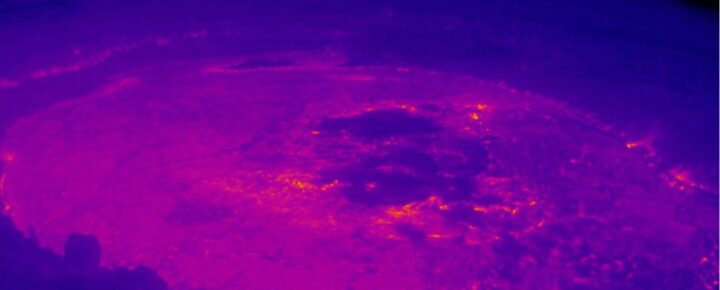

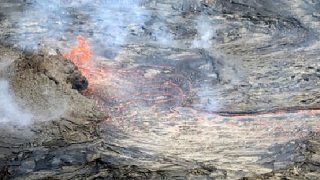

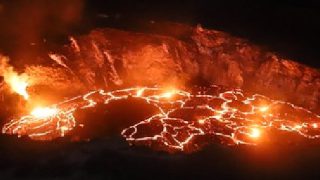
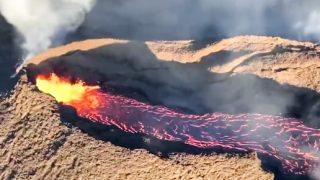
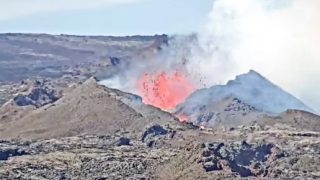
I remember vividly in 2018 when Kapaho was wiped out by lava. One of my favorite places to snorkel.
We were there right before in January snorkeling in the inlet on the far right side. Starts with a W.
My story is, there were houses there touching the snorkeling area for rent. I was too cheap to rent and waited until next time that didn’t come. Life is like that. You need to seize the moment. Believe in Jesus Christ in time before life is over.
We were there in December at our normal time 18 months ago when Mauna Loa was erupting and also Kilauea at the same time. Did we go visit? Are we believers? Yes and Yes.
Once in a lifetime opportunity to see 2 volcanoes 🌋 at the same time most likely.
Helicopter video at Hawaii News Now website (Hawaiinewsnow.com if ok).
Well I do have to say this is when Hawaiian’s local knowledge shines. One more reason why the Alaska merger as it’s being structured is brilliant….keeping HA’s identity and operations intact and capitalizing on their experience will pay handsome dividends the years ahead.